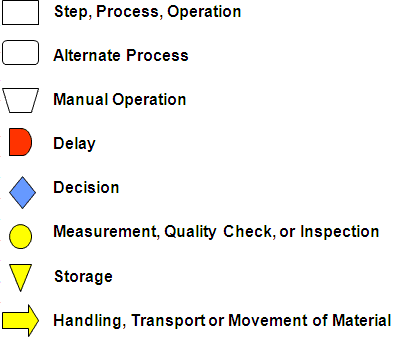Process improvement project - Define -
What is Process Mapping?
This the act of creating a workflow diagram with the goal of gaining a clearer understanding of how a process and its parallel processes work.
The aim of process mapping is to make things clear and to provide insight. The best map is often the simplest map.
There are different approaches to process mapping. Which one you select will depend upon what you need to know, what level you are working at (whole pathway or a small part of it), resources available and timescales.
Even when you think you know all the steps in your process, making a flow diagram with the help of others can be revealing.
Process mapping is an important part of any continuous improvement project – it helps communicate the process at the center of your project and guides you to specific areas of focus. There are a number of choices available, and choosing the right map helps to clarify your efforts.
Here are a few -
-
High Level Map
-
Swimlane Map
-
Detailed Map
-
Value Stream Map
Value-Added vs. Non-Value Added
Theoretically, the perfect state of a value stream or flowchart is to have 100% of the steps adding value. What does this mean?
Value-Added:
-
Physical change in the product
-
Customer is willing to pay for the step or service
-
First time yield is 100% - done right the first time
Non-Value-Added:
PROCESS MAPS
Elements of a Process Map
1. It's considered a living document.
2. There are clear START and FINISH steps.
3. A Process Map should have an overall Owner.
4. Metrics defined to show the future state improvement.
5. Ability to stand the test of time (new hires, people changing roles, etc).
6. Ability to be achievable and realistic.
7. Clear connection points and hand-offs.
8. Accommodate some of the what-if, or unique scenarios.
Flowchart Symbols

As a Lean consultancy, we are passionate about simplicity and Lean is a mindset that we apply in all our areas of activity. Our reward is when we know that we helped you meeting your business objectives, where both management skills and tools play a key role.

